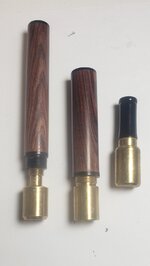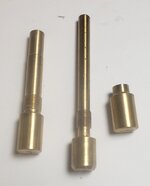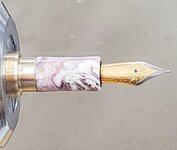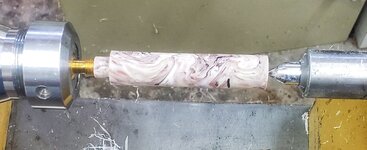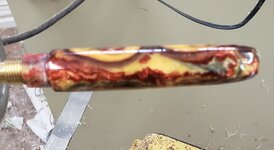Hello,
How do you hold your kitless works on the lathe?
I use a collet chuck and a tailstock live center, but with the live center attached, I can't work on the outer side of the pen.
If I don't use a live center, the work wobbles too much for turning or applying finish. I'm afraid it might even break!
Guess you can turn half of the work and then reverse and turn the other side. But what about applying finish? Shouldn't it be applied all at once? How would you even grab a half finished piece without damaging the finish?
Any tips on your working order and equipment will be appreciated. Thanks!
How do you hold your kitless works on the lathe?
I use a collet chuck and a tailstock live center, but with the live center attached, I can't work on the outer side of the pen.
If I don't use a live center, the work wobbles too much for turning or applying finish. I'm afraid it might even break!
Guess you can turn half of the work and then reverse and turn the other side. But what about applying finish? Shouldn't it be applied all at once? How would you even grab a half finished piece without damaging the finish?
Any tips on your working order and equipment will be appreciated. Thanks!

